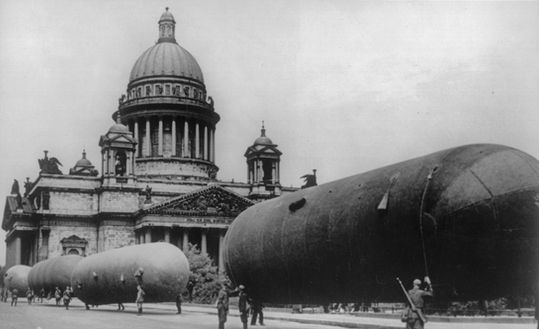CURRENT EXHIBITION
Bunker Gallery
ESTONIAN WAR OF INDEPENDENCE
Photo Exhibition
22.02.2019 - 01.05.2019
Curator - Aleksei Ivanov
Photos from the personal collection of Igor Kopõtin
ALL PICTURES ARE AVAILABLE FOR SALE
Estonian War of Independence (1918-1920)
A struggle for Estonia’s freedom resulted in a victory for the newly established state. Before
the conflict Estonian territory belonged to the Russian Empire. After the Russian Revolution in 1917 and
a separate peace treaty of Brest-Litovsk on March 3, 1918, Estonia was occupied by German troops. After
the German Revolution in November 1918 and the defeat of Germany, German troops left Estonian
territory. This was shortly followed by the Red Army of Russian Bolsheviks intrusion. At that point, Estonian
government has already started gathering their forces. The first battle between Russian Reds and
Estonian troops took place in Narva on November 28, 1918. While under the attack of Russian Reds, Estonian
troops retreated from Narva and Voru in the direction of Tallinn. Before the New Year, Bolsheviks
were stopped 30 km to the East of Tallinn. With the supplies from allies, Finland and Great
Britain, Estonian commander-in-chief MajGen Johan Laidoner was able to generate Estonian national
forces. On January 6, 1919, Estonian forces and Finnish volunteers started the counter-attack on the
Reds. Before the first anniversary of Estonian Independence by the 24 February 1919 almost entire Estonian
territory was liberated from Bolsheviks' forces.
In the second stage of the war battles took place mostly on Russian territories and in Northern Latvia.
Estonian leaders dived into active warfare. That meant creating a buffer security zone
between Estonia and the hostile enemy using allied forces of Russian Whites (so-called North-Western
Army) and additional units of Ingrian Finns, Baltic Germans, Russians and Latvians, that were mobilized in
occupied neighbors' territories. This strategical move was turned out to be a success, which helped save Estonians'
military capacity for the final battle.
This final battle of Estonian War of Independence took place in front of Narva in late November 1919. It was a fight for national borders. Estonian troops were successful and Red Army units were
defeated near Narva in late December 1919 – early January 1920. The war ended after the signing of the Tartu Peace
Treaty on February 2, 1920.
Estonia, for the first time in history, emerged victorious and independent.
16 011 lives of Estonian soldiers were lost.
PREVIOUS EXHIBITIONS
THE SIEGE OF LENINGRAD
Photo Exhibition
25.01.2019 - 22.02.2019
Curator - Aleksei Ivanov
After the Nazis invaded the Soviet Union in the summer of 1941, a German army surrounded the city of Leningrad in an extended siege beginning that September. In subsequent months, the city sought to establish supply lines from the Soviet interior and evacuate its citizens, often using a hazardous “ice and water road” across Lake Ladoga. A successful land corridor was created in January 1943, and the Red Army finally managed to drive off the Germans the following year. Altogether, the siege lasted nearly 900 days and resulted in the deaths of more than 1 million civilians.
German and Finnish forces besieged Lenin’s namesake city after their spectacular initial advance during Operation Barbarossa. After a precipitous advance during summer 1941, forces of German Army Group North struggled against stubborn Soviet resistance to isolate and seize the city before the onset of winter. In heavy fighting during August, German forces reached the city’s suburbs and the shores of Lake Ladoga, severing Soviet ground communications with the city. In November, Soviet forces repelled a renewed German offensive and clung to tenuous resupply routes across the frozen waters of Lake Ladoga. Thereafter, German and Soviet strategic attention shifted to other more critical sectors of the Eastern Front, and Leningrad-its defending forces and its large civilian population-endured an 880-day siege of unparalleled severity and hardship. Despite desperate Soviet use of an “ice and water road” across Lake Ladoga to resupply its three million encircled soldiers and civilians and to evacuate one million civilians, over one million civilians perished during the ensuing siege. Another 300,000 Soviet soldiers died defending the city or attempting to raise the siege. In January 1943, Soviet forces opened a narrow land corridor into the city through which vital rations and supplies again flowed. Not until January 1944, however, didRed Army successes in other front sectors enable the Soviets to raise the siege. By this time, besieging German forces were so weak that renewed Soviet attacks drove them away from the city and from Soviet soil.
PEARL HARBOR - THE SURPRISE ATTACK
Photo Exhibition
12.12.2019 - 25.01.2019
Curator - Aleksei Ivanov
Pearl Harbor is a U.S. naval base near Honolulu, Hawaii, that was the scene of a devastating surprise attack by Japanese forces on December 7, 1941. Just before 8 a.m. on that Sunday morning, hundreds of Japanese fighter planes descended on the base, where they managed to destroy or damage nearly 20 American naval vessels, including eight battleships, and over 300 airplanes. More than 2,400 Americans died in the attack, including civilians, and another 1,000 people were wounded. The day after the assault, President Franklin D. Roosevelt asked Congress to declare war on Japan.
On December 7, after months of planning and practice, the Japanese launched their attack.
At about 8 a.m., Japanese planes filled the sky over Pearl Harbor. Bombs and bullets rained onto the vessels moored below. At 8:10, a 1,800-pound bomb smashed through the deck of the battleship USS Arizona and landed in her forward ammunition magazine. The ship exploded and sank with more than 1,000 men trapped inside.
Next, torpedoes pierced the shell of the battleship USS Oklahoma. With 400 sailors aboard, the Oklahoma lost her balance, rolled onto her side and slipped underwater.
Less than two hours later, the surprise attack was over, and every battleship in Pearl Harbor—USS Arizona, USS Oklahoma, USS California, USS West Virginia, USS Utah, USS Maryland, USS Pennsylvania, USS Tennessee and USS Nevada—had sustained significant damage. (All but USS Arizona and USS Utah were eventually salvaged and repaired.)
BERLIN WALL FALL
Photo Exhibition
9.11.2019 - 7.12.2019
Curator - Aleksei Ivanov
On the 9th of November, 1989, a long-awaited thing happened - the Berlin Wall, put up by the German Democratic Republic in 1961 to physically divide the western and eastern parts of Berlin, was demolished.
The Berlin Wall stretched for 111.9 km, splitting many families, cutting off East Berliners from their jobs in West Berlin, with West Berliners being isolated in a hostile land.
The Berlin Wall was a center of many conflicts throughout the later stages of the Cold War, being a physical representation of the "iron curtain", separating the capitalist West from the communist East.
Now, 30 years later, we celebrate the anniversary of the fall of the Berlin Wall.
YEAR FOR TWO
Photo Exhibition
10.09.2019 - 8.11.2019
author and curator Anton Serdjukov
ALL PICTURES AVAILABLE FOR SALE
"I am from Sillamae. Little town with a big concentration of sea, industrial zones, and gossip about uranium wastes. In such a town usually is happening zero interesting stuff, except for what fun people organize for themselves. From my childhood, I carried that skill to amuse myself.
When doing photography for a long time, you get a habit of expressing your visions, ideas, dreams, and fears through the camera rather than just taking pictures. Camera, people, and computers are just building blocks of a constructor to create a picture."



































































